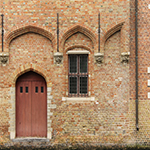Euroacademia Conferences
 Europe Inside-Out: Europe and Europeanness Exposed to Plural Observers (9th Edition) April 24 - 25, 2020
Europe Inside-Out: Europe and Europeanness Exposed to Plural Observers (9th Edition) April 24 - 25, 2020 Identities and Identifications: Politicized Uses of Collective Identities (9th Edition) June 12 - 13, 2020
Identities and Identifications: Politicized Uses of Collective Identities (9th Edition) June 12 - 13, 2020 8th Forum of Critical Studies: Asking Big Questions Again January 24 - 25, 2020
8th Forum of Critical Studies: Asking Big Questions Again January 24 - 25, 2020 Re-Inventing Eastern Europe (7th Edition) December 13 - 14, 2019
Re-Inventing Eastern Europe (7th Edition) December 13 - 14, 2019 The European Union and the Politicization of Europe (8th Edition) October 25 - 26, 2019
The European Union and the Politicization of Europe (8th Edition) October 25 - 26, 2019 Identities and Identifications: Politicized Uses of Collective Identities (8th Edition) June 28 - 29, 2019
Identities and Identifications: Politicized Uses of Collective Identities (8th Edition) June 28 - 29, 2019 The European Union and the Politicization of Europe (7th Edition) January 25 - 26, 2019
The European Union and the Politicization of Europe (7th Edition) January 25 - 26, 2019 7th Forum of Critical Studies: Asking Big Questions Again November 23 - 24, 2018
7th Forum of Critical Studies: Asking Big Questions Again November 23 - 24, 2018 Europe Inside-Out: Europe and Europeanness Exposed to Plural Observers (8th Edition) September 28 - 30, 2018
Europe Inside-Out: Europe and Europeanness Exposed to Plural Observers (8th Edition) September 28 - 30, 2018 Identities and Identifications: Politicized Uses of Collective Identities (7th Edition) June 14 - 15, 2018
Identities and Identifications: Politicized Uses of Collective Identities (7th Edition) June 14 - 15, 2018
Brazilians’ Houses: Assertion of an Architectural Identity in Northern Portugal
-
-

-
Presentation speakers
- Alda Neto, University of Porto, Portugal
Abstract:
At the end of the 19th and in the 20th centuries the return of a large number of Portuguese emigrants coming from Brazil, originating from the northern parts of the country, namely Minho and Douro, took place. These emigrants brought considerable fortunes, made in Brazilian trade and industry. This return led to the claiming of a personal and material identity, visible in the route they set in their places of origin and in the property they built and/or preserved, which was the case of the houses. These houses, named by the local population and by historiography as “Brazilians’ houses”, are an effort to reflect the personal and professional assertion of the successful emigrant – the Brazilian. Among this material heritage built by Portuguese emigrants, the houses stand out, which represent the work path in Brazil; that route is reflected both in the interior decoration ( mural paintings, exotic wood) and in the exterior (sculptural representations of trade or industry and the use of granite). These houses show influence of the artistic tendencies of the 19th century, like Nouveau Art (iron and tiles) or Romanticism (ruins). Thus, tradition and modernity establish in this example of patrimony a dialogue which allowed the creation of an architectural identity particular to Northern Portugal. The houses, the places, the regions and the people have a spirit, always composed of differences and interdependence. This patrimony has thus been characterized by a dialogue between the places and the peoples, namely by criticism to the architectural changes brought in, called “examples of bad taste”. This kind of heritage is thus considered to be worth an approach in terms of patrimony and architectural valorization, but above all it should be the object of intense work of preservation and rehabilitation. Everybody has the right to be included and participate in the valorization of this patrimony, according to their choices, as a way of ensuring the right to freely take part in cultural life. Hence the importance of promoting and deepening the participation of citizens in the preservation of this patrimony.
-
Related Presentations

The Institutional Balance: A Phantom Concept of EU Constitutional Law
- Oleksandr Moskalenko

The European Union Model for the Albanian Europeanization
- Irna Peshkepia

Christianity, the Secular and European Identity
- Ian Morrison















